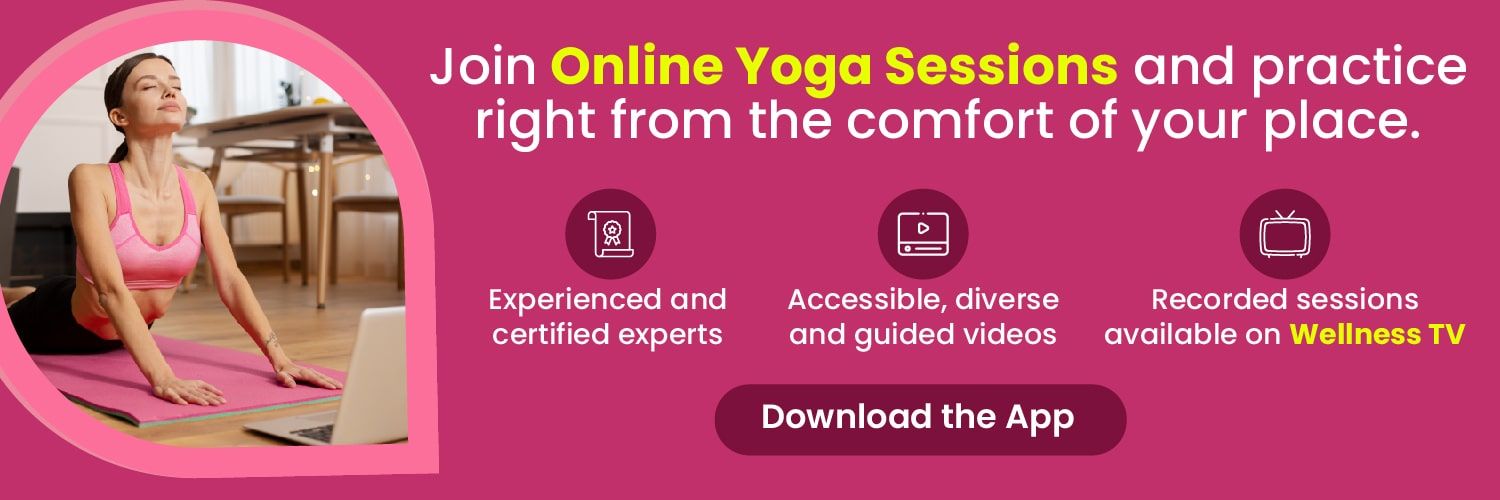Stay Fit At Your Desk: Yoga Poses For Computer Users
24 months ago
4 minute read.

Spending a lot of time in front of screens – whether it's for work, school, or leisure. Computers, smartphones, and other gadgets have become a big part of our lives. But here's the catch: spending too much time in front of screens can lead to some problems.
Think about it – when was the last time you sat at your computer for hours, maybe hunched over or with your eyes glued to the screen? We've all been there, and it's not always comfortable.
But there's good news. Yoga, an ancient practice that combines physical postures, breathing exercises, and meditation, can help us feel better, even in our tech-heavy lives. We'll look at easy yoga exercises you can do right at your desk to help your body feel more relaxed.
And here's the best part: you don't need to be a yoga expert to use these tools. They're designed to be easy to understand and simple to do, even if you're new to yoga. By using these yoga tools regularly, you can make your digital life more comfortable, stay focused, and reduce stress.

Why computer users experiece tension and pain
- Poor posture: The most common reason for tension and pain in computer users is poor posture. Slouching, leaning forward, and looking down at a screen can strain the neck, shoulders, and back.
- Repetitive movements: Typing and using a mouse involve repetitive hand and wrist movements, which can lead to conditions like carpal tunnel syndrome.
- Eye strain: Staring at a screen for extended periods can cause eye strain, headaches, and even disrupted sleep patterns.
- Sedentary lifestyle: Long hours of sitting without breaks can result in weakened muscles, reduced flexibility, and poor circulation.

Desk yoga for quick refreshment

One of the biggest challenges for computer users is the prolonged periods of sitting. Desk yoga provides simple and effective exercises that can be done right at your workstation to alleviate tension and refresh your body and mind. Here are a few desk yoga poses to try:
- Neck rolls: Gently roll your head from side to side to release tension in your neck and shoulders.
- Seated spinal twist: Sit tall, twist your upper body to one side, and hold the back of your chair for support. This pose is excellent for relieving lower back stiffness.
- Chair cat-cow stretch: While seated, mimic the cat-cow stretch by arching and rounding your back. It's a great way to loosen your spine.
Also try: 10 Yoga asanas you can easily practice everyday
Eye yoga for digital eye strain

Staring at screens for prolonged periods can strain your eyes, leading to discomfort and fatigue. Eye yoga exercises can help alleviate this strain and improve your focus. Here's a simple eye yoga routine:
- Palming: Rub your palms together until they feel warm. Close your eyes and lightly put your hands over them. Deep breathing and relax for a minute.
- Eye circles: Gently roll your eyes in a clockwise and then counterclockwise direction. Blink a few times in between to refresh your eyes.
- Focus shifting: Hold your thumb in front of your face and concentrate on it. Then, transfer your attention to an object in the distant. Repeat this alternatively for a minute or two.
Breathing exercises for stress reduction

Stress and anxiety often accompany our digital lives. Yoga places a strong emphasis on breath control, and practicing breathing exercises can help calm your mind and reduce stress. Try the following pranayama exercises:
- Deep belly breathing: Sit or stand with your back straight. Deeply inhale through your nose, allowing your abdomen to expand. Exhale slowly through your mouth. Repeat for several breaths.
- Alternate nostril breathing: Inhale through your left nostril and close your right nose with your thumb. Then, using your ring finger, close your left nostril and exhale through your right nose. Repeat this pattern for a few minutes.
Also check: Expert-approved yoga asanas for stress relief
Precautions
- Consult a yoga instructor: If you're new to yoga, it's essential to consult a qualified instructor who can guide you in performing asanas correctly to avoid injury.
- Listen to your body: Never force yourself into a yoga pose. If you experience pain or discomfort, back off and modify your posture as needed.
- Ergonomic workspace: Adjust your computer setup to promote better posture. Use an ergonomic chair and keyboard, and position your monitor at eye level.
- Regular breaks: Every hour, take a small break to stand, stretch, and walk around. This reduces stiffness and increases circulation.
- Stay hydrated: Hydration is essential for muscle and joint health. Drink plenty of water throughout the day.
Conclusion
Yoga is a valuable tool for computer users seeking relief from tension and pain caused by long hours of screen time. By incorporating these yoga asanas into your routine and taking necessary precautions, you can improve your posture, reduce discomfort, and enhance your overall well-being. Remember, a healthy body and mind are essential for optimal productivity and a pain-free computer-using experience.
Leave a Comment
Related Articles
Health Checks @ Home
Service
Explore
© 2025 Truworth Health Technologies Pvt. Ltd.





